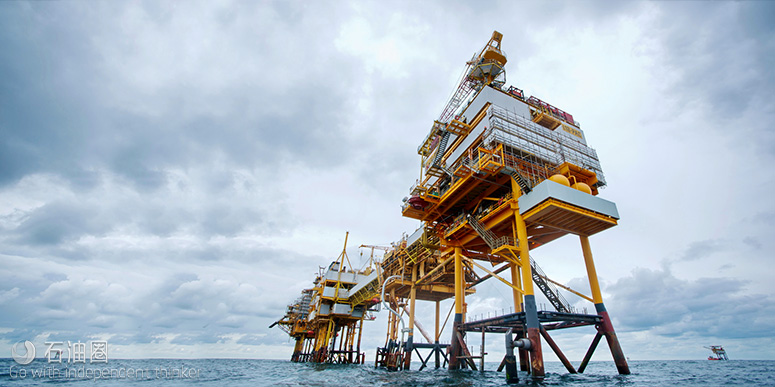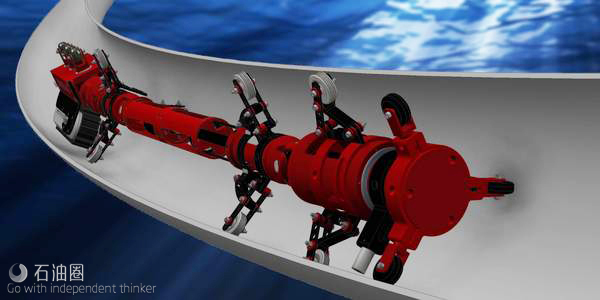Subsea tie-backs to host platforms are an attractive option in the current offshore cost-cutting mode. A new remotely deployed inspection tool for J-tubes and risers helps ensure that existing infrastructure is up to the task.
The J-tube, a common feature of offshore platforms, provides a conduit for pull-in installation of a small diameter riser or umbilical to the platform. Installation typically involves the use of a winch to pull the umbilical or riser through the J-tube from the seabed to the platform, with support from a remotely operated vehicle (ROV) or dive support vessel (DSV).
The trend to tie back subsea wells to existing infrastructure via J-tubes is likely to grow as operators look to cut development costs. Many of the structures may have remained unused for years, however, and even if they were initially sealed off, corrosion and marine growth are a risk. Operators must conduct a thorough inspection of the J-tube prior to use as a conduit, often using the DSV to provide support.
Aberdeen-based AISUS Offshore, which specialises in ultrasonic and visual inspection of caissons and risers, has developed a platform-deployed tool, dubbed Scorpius, that can be used to conduct an internal inspection of a tubular without the need for costly DSV or ROV services.
The Scorpius tool can inspect the full length of a J-tube, including bends and varying diameters, says AISUS managing director Stuart Lawson.
“It’s quite a flexible tool,” he says. “It’s able to work with different configurations, diameters, lengths, and gradual bends.”
ON THE CURVE: A rendering shows AISUS Offshore’s Scorpius tool, outfitted with a camera and a crawler track system, negotiating a bend.
The Scorpius tool may be gravity deployed or equipped with a crawler track system, depending on the type of structure and its condition at the time of inspection, Lawson says. As it moves along the tubular, it captures video footage and transmits the information in real time. When configured with sensors, the device collects ultrasonic thickness measurements to create a corrosion “map” of the structure.
Scorpius may also be deployed with a water-jetting system for high-pressure cleaning, and with equipment to “prove” diameter measurements and ensure that an umbilical or riser will fit through the narrowest sections of a J-tube.
The technology helps operators more effectively budget for projects and avoid unplanned delays, Lawson explains.
“There’s often a small window between an inspection done with traditional methods and the umbilical being pulled through the J-tube,” he says. If a DSV or ROV team is on hand to conduct both operations, the costs associated with a delay caused by a blockage or corrosion mitigation can quickly add up.
Lawson calls it “up-front inspection” to mitigate the risk of encountering obstructions during pull-in operations. AISUS recently employed the technique in the North Sea, where it used the Scorpius tool to conduct a J-tube inspection ahead of an umbilical installation. The machine was outfitted with visual and gauge plate inspection equipment, as well as a high-pressure water jetting apparatus in case the inspection turned up internal marine growth or debris.
In the North Sea case, six years had elapsed between installation of the J-tube and the pull-in of the umbilical — not an extraordinary amount of time in the life of a platform, but long enough for considerable marine growth to accumulate, he says.
After cleaning the interior, AISUS used the Scorpius tool’s camera and crawler system to drive a messenger wire 170 metres to the J-tube’s termination. The wire was later used to facilitate the pull-in of the umbilical.
J-tubes and risers — many far older than the above example — may be repurposed or built in to the original platform for spare capacity. Because the structures traverse a range of conditions between the seafloor and splash zone, they can be difficult to fully examine using external inspection methods alone.
“Also, it depends on what some of the spare risers or J-tubes are going to be used for,” Lawson says. “If a spare riser is to be repurposed and will be carrying pressurised fluids, you need to ensure that it is fit-for-purpose.”
AISUS Offshore is itself a young company, established in early 2013. Its 13 employees are based in Aberdeen, and the company has so far focussed on the UK market, although Lawson says efforts are under way to expand the business’ activities elsewhere in Europe and in the Middle East.
Four years in the North Sea and tools such as the Scorpius have given the team a lot of insight about subsea inspection and the reuse of existing infrastructure, he says.


 石油圈
石油圈

